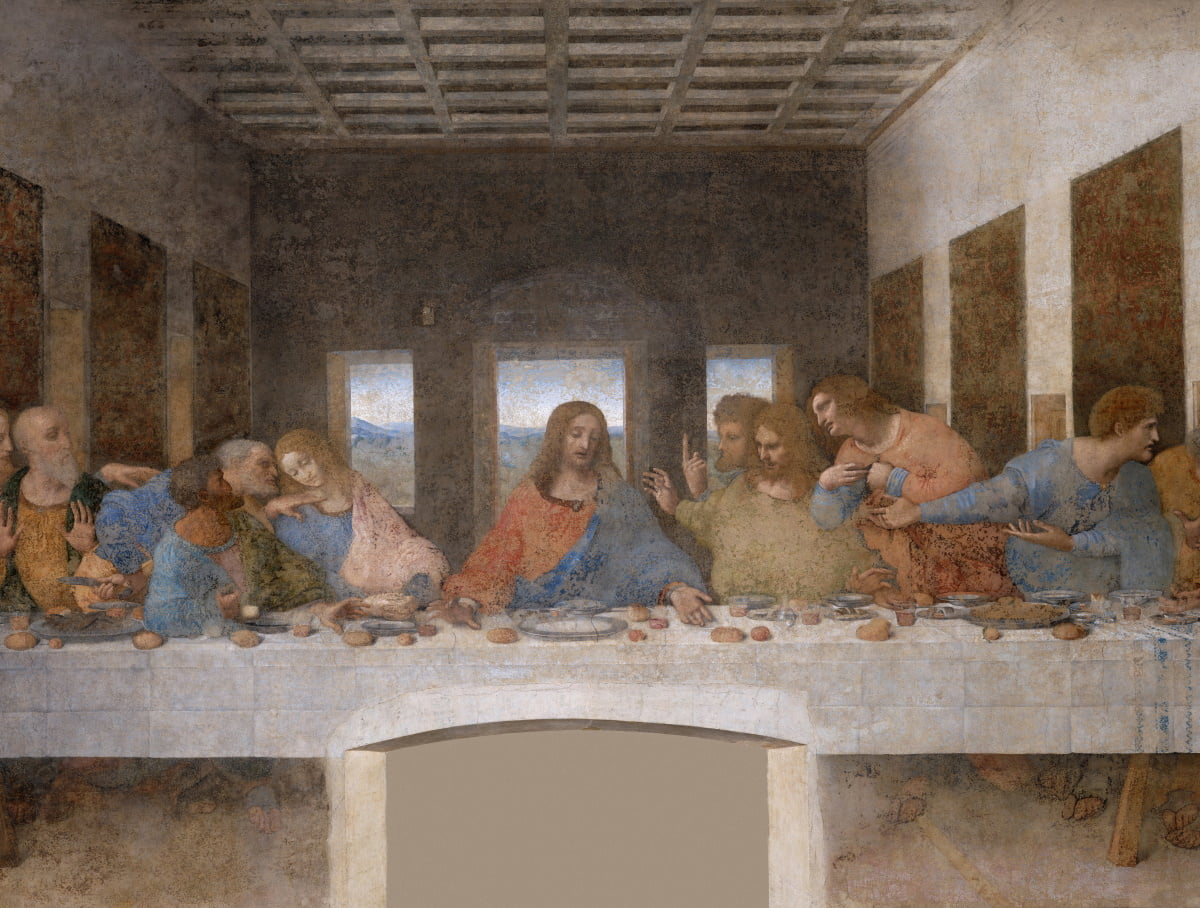There is a widespread opinion that the legendary “Last Supper” created by Leonardo da Vinci is incorrectly called a fresco. We checked whether the author really did not use the fresco technique for his masterpiece.
Leonardo's work is called a fresco in "Big Russian Encyclopedia", encyclopedias Britannica, textbook "World artistic culture" for 10th grade, "Atlas of World Painting", book "The Art of the Italian Renaissance" and many other reputable sources. But the famous artist Alexandre Benois in his “History of painting of all times and peoples” calls Leonardo da Vinci's work a "painting". At the same time in Networks a lot publications, Where emphasizedthat this masterpiece by Leonardo cannot be called a fresco.
So, we need to understand what Leonardo da Vinci’s work “The Last Supper” is. She was created around 1495–1498 on the grounds of the monastery of Santa Maria delle Grazie in Milan, where it occupies the entire rear wall of the refectory. Let's turn to the art dictionary, in which a painting is defined as “a work of easel painting.” "Great Soviet Encyclopedia" additionally reportsthat the painting is not necessarily tied to a specific interior. In other words, the key feature of this type of art is portability, which the Last Supper, depicted on the wall and becoming part of the architectural ensemble, does not have. It follows that “The Last Supper” is definitely not a painting.
Now let's get acquainted with the definition of fresco, again turning to the dictionary. Fresco called a type of monumental painting that uses lime as the main binder. The key aspect of this technique is writing on fresh, damp plaster (from the Italian fresco - “fresh”). Speaking about the history of the creation of The Last Supper, art historians pay attention that Leonardo da Vinci was quite slow. Thinking through every step, he slowly created his masterpiece. The monks who served the artist notedthat Leonardo was often absent from work. The fresco technique does not imply delays, because the plaster dries quickly - this limits the time the author has to write the work. The author was pedantic in his approach, so the fresco technique simply did not suit him. He didn't use it.
What, then, is the “Last Supper”? One could use a more general and universal answer - painting. However, this term is not associated with a specific technique and covers all types of painting related to architecture, with the exception of mosaics and panels, and we would like a classification at the same level of specificity as fresco. Leonardo da Vinci, inventive and at the same time fickle in character, required a type of painting that would allow him to make changes as he worked. For this reason, the artist chose a technique opposite to the fresco a secco (Italian “dry”), which is characterized by usage as a primer a mixture of resin, gypsum and mastic. This explains why the painting was almost not preserved in its original form - it simply could not withstand the harsh conditions of the refectory, which used to constantly receive moist air from the kitchen of the monastery.
Despite the fact that, strictly speaking, it is incorrect to call Leonardo da Vinci’s “Last Supper” a fresco, it cannot be considered a gross mistake. The fact is that there is a generalized, everyday understanding of the word “fresco”, which includes both the a fresco technique and the a secco technique. It was even reflected in the same "A brief dictionary of fine art terms". How notes art critic Sofya Bagdasarova, “in everyday normal life, the use of the word “fresco” for something that is not painted wet is no longer a disaster.” However, if we strive for academic literacy, then Leonardo's masterpiece should be called a painting or, more accurately, a secco.
Mostly true
Read on topic:
Problems with the word “fresco”, or About attacks of grammar-Nazism in the field of art
If you find a spelling or grammatical error, please let us know by highlighting the error text and clicking Ctrl+Enter.







